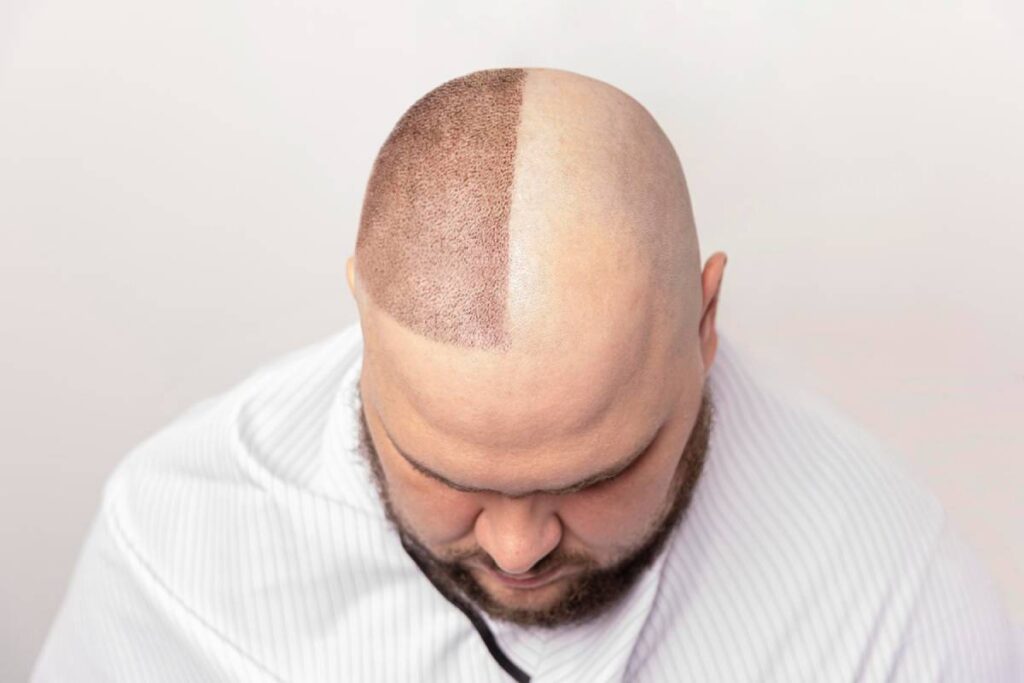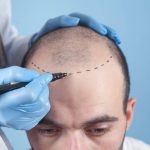Understanding Hair Transplantation
Hair transplantation is a surgical procedure designed to restore hair in areas affected by thinning or baldness. It involves extracting healthy hair follicles from donor areas and implanting them into bald spots.
The effectiveness of hair transplantation depends on factors like the patient’s hair type, the technique used, and post-procedure care. While results are not immediate, they can be long-lasting and natural-looking.
What to Expect in the First Few Weeks
Immediately after hair transplantation, patients may experience mild swelling, redness, and scabbing around the treated area. These side effects are temporary and typically subside within a few days.
Within the first two to three weeks, transplanted hairs may fall out—a normal process known as “shock loss.” This is a natural part of healing and indicates that new hair growth is beginning beneath the scalp.
Hair Growth Timeline: Month-by-Month Progress
By the third month, most patients will start seeing the early signs of new hair growth. The hair may initially appear thin and uneven, but this is part of the natural regrowth cycle.
Between the fourth and sixth months, hair density improves significantly. By the end of the first year, most patients achieve noticeable, fuller hair, with final results typically visible by 12 to 18 months post-procedure.
Factors That Influence Growth Speed
Several factors impact how quickly a patient sees results from hair transplantation. The type of procedure—FUE (Follicular Unit Extraction) or FUT (Follicular Unit Transplantation)—affects healing time and regrowth speed.
Other contributing factors include overall scalp health, adherence to post-operative care instructions, and individual genetics. Proper nutrition and avoiding stress can also enhance hair regrowth.
Does Hair Transplantation Work for Everyone?
While hair transplantation is effective for many individuals, not everyone is an ideal candidate. The best results are achieved in patients with healthy donor hair and realistic expectations about the process.
Consulting with a specialist can help determine eligibility for the procedure and identify any underlying conditions that may impact hair growth.
Post-Transplant Care: Ensuring the Best Results
Proper post-procedure care is essential for maximizing the success of hair transplantation. Patients should avoid excessive sun exposure, heavy physical activity, and touching the scalp during the healing process.
Using recommended shampoos and following the doctor’s guidelines on washing and styling hair ensures that transplanted follicles remain healthy and thrive over time.
How Long Do Transplant Results Last?
One of the biggest advantages of hair transplantation is its long-term effectiveness. Transplanted hair is typically permanent because it comes from areas resistant to hair loss.
However, patients should maintain a healthy lifestyle and follow proper hair care routines to preserve results. Some individuals may need additional sessions to achieve their desired density.
Conclusion
Hair transplantation offers an effective, long-term solution for bald spots, but results require patience. While initial signs of growth appear within a few months, full results typically take a year or more.
By following medical guidance and maintaining good scalp health, patients can enjoy a fuller head of hair and increased confidence.
Frequently Asked Questions
- How soon will I see results after hair transplantation?
- Initial hair growth starts around 3-4 months post-procedure, with full results visible in 12-18 months.
- Is hair shedding normal after a transplant?
- Yes, shedding (shock loss) is a normal part of the healing process and indicates new hair growth beneath the scalp.
- Will my hair look natural after transplantation?
- Yes, when performed by a skilled surgeon, hair transplantation results look completely natural.
- Can anyone get a hair transplant?
- Not everyone is a candidate. Patients need a healthy donor area and realistic expectations.
- Does hair transplantation leave scars?
- FUE leaves minimal scarring, while FUT may leave a small linear scar in the donor area.
- How long does the procedure take?
- Depending on the number of grafts, hair transplantation can take between 4-8 hours.
- Can I return to work after the procedure?
- Most patients resume work within a few days, depending on the nature of their job.
- Will I need more than one session?
- Some patients may require additional sessions to achieve desired hair density.
- Is the procedure painful?
- Local anesthesia ensures that hair transplantation is a relatively painless procedure.
- How can I maintain my results?
- Maintaining a healthy diet, avoiding smoking, and following proper hair care can help preserve transplant results.












